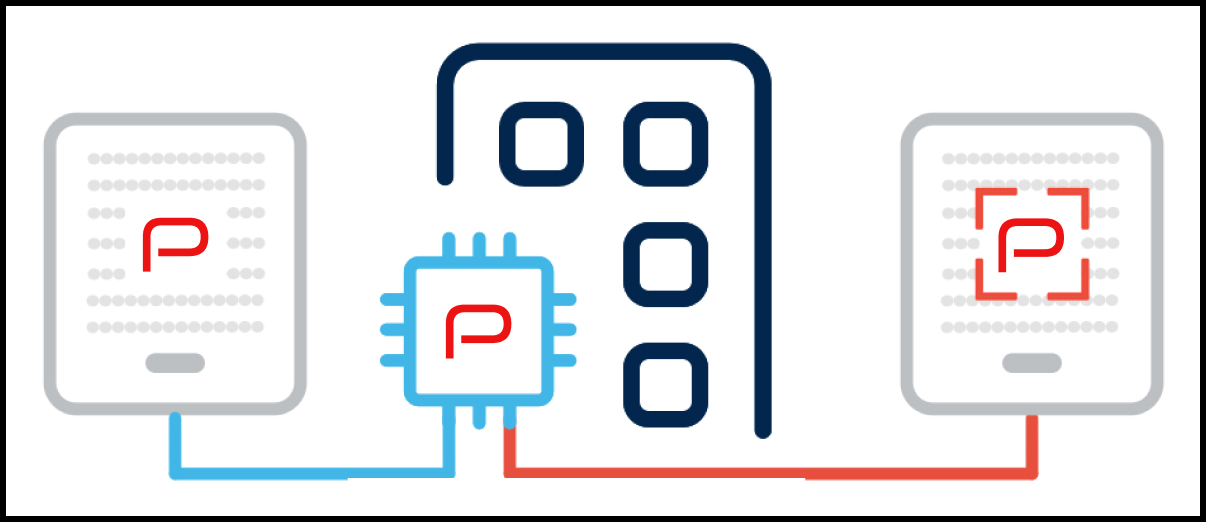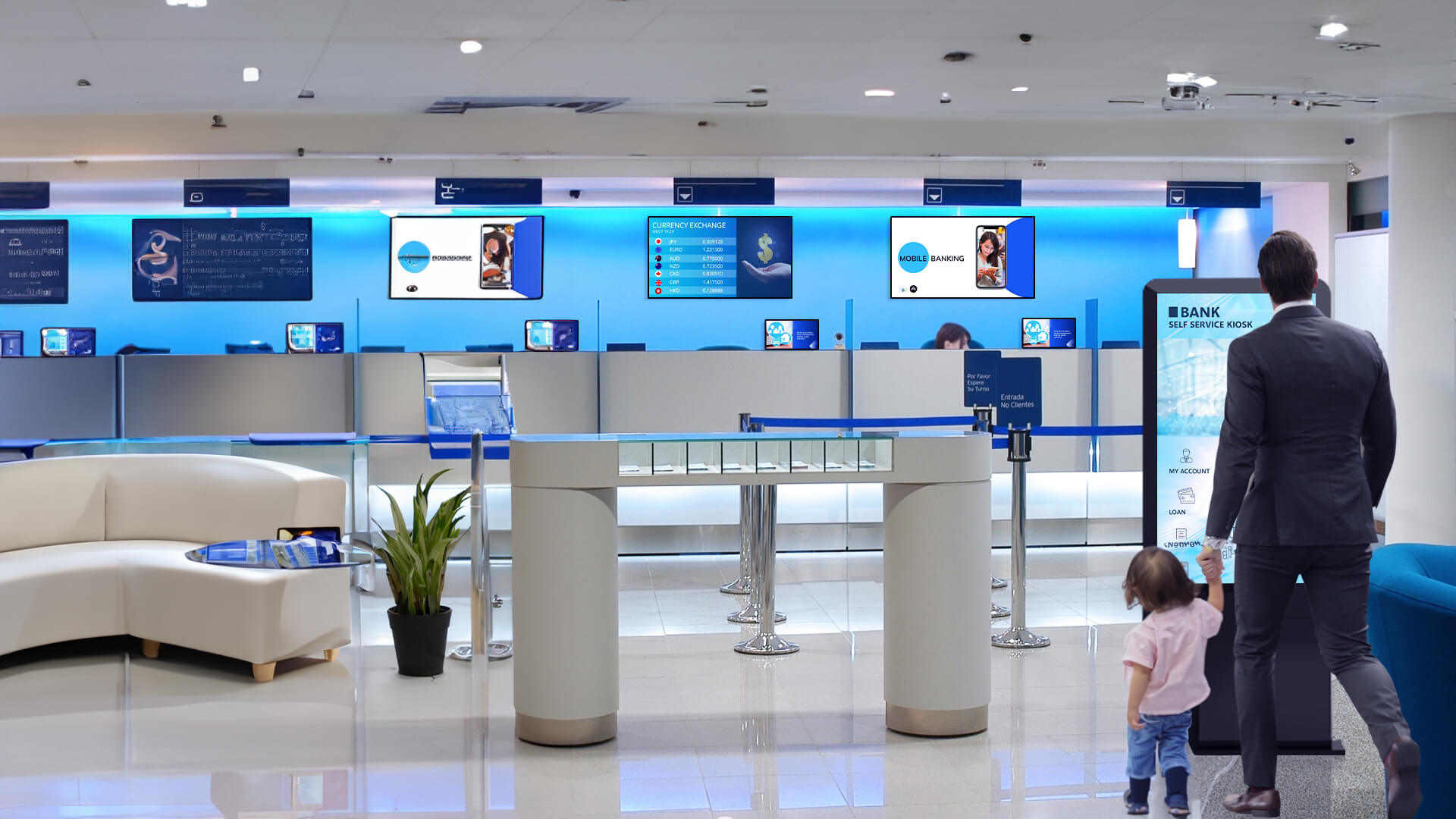
Dec 21 2023
8 min read

Digital signage has become a valuable tool for effective communication in today’s digital era, with organizations in various industries recognising its significance. While many businesses choose cloud-based software for obvious reasons like better scalability and reduced dependency on private IT infrastructure, certain organizations may prefer hosting the solution on their private data center.
An on-premise solution is a self-hosted and locally managed system that grants organizations full control over their digital signage network, content creation, and management from within their premises.
It ensures better security and enables organizations to comply with stringent regulatory frameworks and policies.
On-premise solutions operate using a self-hosted and local server-based approach. This means that the entire system is managed internally within the organization’s premises. Instead of relying on external servers or cloud-based services, the necessary hardware, software, and content management system are installed and accessible locally.
This ensures organizations have greater control, security, and autonomy over their digital signage network.

The on-premise solution requires the standard components of a digital signage system with the additional need of a local server.
1. Digital displays: These are the visual screens or monitors used to showcase the digital content to the audience. Depending on the organization’s requirements, they can be individual screens or video walls.
2. Media players: These devices play and render the digital signage content on the displays. There can be dedicated hardware devices or software applications running on specific machines or embedded within the displays themselves.
3. Content management software: This software allows organizations to create, schedule, and manage their digital screen content. It provides an intuitive interface for content creation, layout design, playlist management, and remote content updates.
4. Local server: The local server serves as the central hub of the on-premise digital signage system. It hosts and manages the content management system, ensuring smooth communication between the media players and displays. The local server enables organizations to maintain control over content distribution and ensures reliable playback of scheduled content.
By integrating these key components, on-premise solutions offer organizations the flexibility, control, and reliability required to deliver targeted and engaging messages to their audience, all within their own premises.
From regulated sectors to data-sensitive industries, local hosting of the digital signage software offers a range of advantages, making it a suitable choice for organizations with unique needs.
Let’s look at a few types of organizations that typically prefer deploying on-premise solutions.

The government and public sector organizations may need secure communication channels for both internal communication and public broadcasting.
Government offices at various levels can benefit from self-hosted digital signage to enhance communication with employees and the public. These offices can display important announcements, policy updates, and news related to government initiatives. Self-hosted digital signage ensures that the information reaches the intended audience promptly and accurately, without any tampering.
Public service centers, such as DMV offices, police stations, social service centers, and public libraries, can utilize on premise solutions to provide information and instructions to visitors.
Some of these information can be private or exclusive, meant for only the intended audience― for example, premise maps, safety protocols, user registration information, private data of citizens, criminal offenders’ information, etc.
Therefore, it is important that when displaying sensitive data on digital signage, the display systems are adequately protected from potential cyber threats.
Through self-hosted and locally-managed digital signage networks, courtrooms and legal institutions can enhance communication and provide important updates to attorneys, litigants, and the public.
Screens can be used to display case schedules, courtroom assignments, and legal announcements, ensuring that participants are well-informed about proceedings and changes.
Many courtrooms also use digital screens to conduct virtual trials. In such cases, safeguarding the network from hackers may call for the deployment of an on-premise solution.
Certain industries operate under strict regulations and compliance requirements. Self-hosted digital signage helps these businesses meet their communication needs while adhering to industry standards. Here are some examples:

Digital signage in banks and financial institutions can utilize help display real-time financial information, exchange rates, investment updates, and regulatory notices. This ensures that customers have access to accurate and up-to-date information, enhancing transparency and trust.
Healthcare providers and pharmaceutical companies operate in highly regulated environments. On premise solutions for digital signage enable them to display compliance-related information, safety protocols, patient privacy notices, and educational content. It helps reinforce compliance standards and improves patient education and engagement.
Energy and utility companies deal with sensitive and confidential information, including customer data, operational details, and infrastructure data. Often these companies are located in remote areas with limited internet connectivity. An on-premise solution can ensure uninterrupted operation.
Relying on the cloud for digital signage might be challenging if the network infrastructure is not reliable, as it could lead to downtime and disruptions.
Legal and accounting firms need to maintain high security standards for any digital system they are using. That is because these firms deal with sensitive client information such as displaying case updates, financial data, legal announcements, or industry-specific news.
With on-premise solutions, they can easily integrate their internal data sources, proprietary software, or specialized content management systems to display the precise information they need.
Businesses that rely heavily on data analysis and visualisation can benefit greatly from on-premise solutions. It allows them to display real-time data, key performance indicators, and analytics insights, enabling better decision-making.
Technology companies can use on-premise solutions to showcase their product features, demonstrate data visualisation, and display real-time analytics on digital signage.

Research institutions and laboratories often have complex data sets and findings that need to be communicated effectively. However, these data may be highly confidential or may be fetched from third-party tools. In such cases, if the solution is hosted on the private data center, integration with internal system becomes simpler.
Manufacturing and supply chain companies can leverage self-hosted digital signage to display real-time production data, inventory levels, and supply chain performance metrics. It enhances transparency, facilitates decision-making, and improves overall operational efficiency.
These companies may require real-time updates for operational efficiency, which is why a low latency and high responsiveness of the signage software is essential. An on-premise solution can provide better performance and responsiveness.
In conclusion, on-premise digital signage remains a powerful and essential tool for businesses seeking to elevate their communication strategies and enhance customer experiences. Throughout this blog, we have explored the various reasons why on-premise digital signage is necessary in today’s fast-paced and competitive landscape.
By embracing on-premise digital signage, businesses can improve system security, ensure smooth functioning of the network and enjoy more tailored solutions.
Pickcel has a track record of delivering flawless on-premise digital signage solutions with customizations for brands like Mercedes-Benz & Manipal Hospitals. Want to enjoy the same control over your digital signage network? Schedule a demo with us today!

Dec 21 2023
8 min read

Dec 19 2023
8 min read

Dec 14 2023
8 min read

Dec 8 2023
8 min read
Take complete control of what you show on your digital signage & how you show it.
Start Free Trial Schedule My DemoSee How to Boost Sales & Branding with Digital Signage -40% Less Work, Faster Updates, Better Visibility
Unlock Exclusive Insights